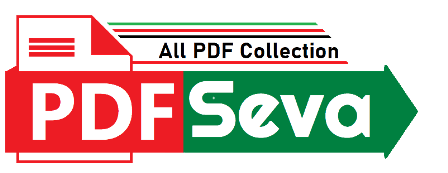
ad here
650 Download
1 year ago
Download the latest Single Spine Salary Structure 2023 PDF for free! Stay updated with comprehensive pay scales and benefits. Grab your copy now! single spine salary structure for health workers 2023 pdf. single spine salary structure 2023 in ghana pdf. single spine salary structure 2023 in ghana. single spine salary structure 2023 for health workers. single spine salary structure pdf. single spine salary structure for civil servants. single spine salary structure for health workers pdf
In the dynamic landscape of human resource management, the Single Spine Salary Structure (SSSS) has emerged as a revolutionary approach to compensation. As we step into 2023, organizations worldwide are contemplating the adoption of this innovative salary model. Let’s delve into the intricacies of the Single Spine Salary Structure, exploring its components, advantages, challenges, and the impact it could have on employee engagement.
The Single Spine Salary Structure is built on three foundational components: Basic Salary, Allowances, and Grading/Steps. Understanding the interplay of these elements is crucial for organizations navigating the transition.
Unlike traditional structures, the SSSS places significant emphasis on a fixed Basic Salary. This provides clarity and ensures a standardized approach to compensation.
Additional components such as housing, transport, and special allowances contribute to the overall remuneration. The SSSS introduces transparency in detailing these allowances, fostering trust among employees.
The system categorizes positions into grades, each with defined steps. This not only streamlines career progression but also ensures fair compensation based on experience and expertise.
The SSSS aims to eradicate pay disparities, promoting equal pay for equal work. By aligning salaries with job grades, organizations intend to create a more equitable work environment.
As we step into the new year, organizations are actively considering the adoption of the Single Spine Salary Structure. The implementation process involves meticulous planning, employee training, and effective communication strategies.
One of the primary advantages of the SSSS is transparency. Employees gain a clear understanding of how their salaries are structured, fostering a sense of trust and reducing ambiguity.
The SSSS addresses gender and role-based pay gaps, ensuring that individuals performing similar roles receive comparable compensation. This not only aligns with principles of fairness but also enhances workplace morale.
Knowing that their efforts are directly correlated with career progression and increased remuneration, employees are likely to be more motivated and engaged in their roles.
HR departments benefit from the streamlined nature of the SSSS, as it simplifies payroll management, reduces errors, and allows for efficient budgeting.
Critics argue that the SSSS may inadvertently create new inequities, especially if not implemented and managed effectively. It requires a nuanced approach to ensure fairness across all grades and steps.
Transitioning to the SSSS can pose challenges related to software integration, employee resistance, and the need for comprehensive training programs. Organizations must proactively address these hurdles for a smooth transition.
Employee apprehensions about changes in their compensation structures need to be addressed through clear communication and support mechanisms. Failure to do so may lead to a decline in morale and productivity.
The SSSS has the potential to significantly impact job satisfaction. When employees perceive that their contributions are fairly rewarded, job satisfaction increases, contributing to a positive workplace culture.
Organizations adopting the SSSS may observe improved retention rates as employees are more likely to stay with a company that recognizes and rewards their efforts appropriately.
Employee engagement and motivation, fostered by the SSSS, can positively influence productivity. Employees who feel valued are more likely to invest their time and energy into their roles.
Contrasting the SSSS with traditional models highlights the shift from variable to fixed components. While traditional structures may offer flexibility, the SSSS’s emphasis on transparency and equality stands out.
Each salary structure has its merits and demerits. Understanding the nuances helps organizations make informed decisions about what aligns best with their values and organizational culture.
The adoption of the SSSS aligns with global trends toward fair and transparent compensation structures. Organizations worldwide are exploring innovative approaches to address longstanding issues of pay inequality.
Several organizations have successfully implemented the SSSS, showcasing positive outcomes in terms of employee satisfaction, reduced turnover, and improved organizational efficiency.
Examining case studies provides valuable insights into the challenges faced during implementation and the strategies employed to overcome them.
While the SSSS offers a standardized framework, organizations may need to adapt it to their specific needs and industry dynamics for optimal results.
Advancements in technology are likely to shape the future of salary structures. From automated payroll systems to AI-driven compensation analyses, the landscape is evolving.
The rise of remote work introduces new considerations for salary structures. Organizations must factor in location-based cost of living and implement fair compensation policies for remote employees.
Salary structures are not static. Organizations must embrace a mindset of continuous evolution to stay ahead of industry trends and retain top talent.
Gaining insights from HR professionals provides a realistic understanding of the challenges and benefits associated with the SSSS.
Industry leaders offer perspectives on how the SSSS aligns with broader trends and the future direction of compensation strategies.
Experts share their predictions on how salary structures will evolve, considering economic, technological, and societal factors.
Establishing clear HR policies and guidelines is essential for a successful transition to the SSSS. This includes communication plans, employee training modules, and conflict resolution mechanisms.
Preparing employees for the changes in the salary structure is crucial for a smooth transition. Training programs should focus on the benefits, implications, and procedural aspects of the SSSS.
Transparent and effective communication is key to overcoming resistance and fostering acceptance among employees. HR departments must articulate the reasons for the change and address concerns proactively.
HR departments need to manage employee expectations by setting realistic goals and communicating openly about the changes. This mitigates dissatisfaction and fosters a positive transition.
While the SSSS aims to provide fair compensation, organizations must balance this with budget constraints. Strategic planning and financial foresight are essential to avoid financial strain.
Ensuring compliance with local labor laws and regulations is paramount during the implementation of the SSSS. HR departments must conduct thorough audits to avoid legal complications.
Collecting employee feedback through surveys helps gauge their sentiments and concerns. This information is invaluable for fine-tuning the implementation process.
HR departments should actively address employee concerns and provide support mechanisms. Open communication channels and feedback loops contribute to a smoother transition.
Building a culture of transparent communication enhances employee satisfaction and confidence in the organization’s decision-making processes.
Implementing effective change management strategies involves anticipating resistance, communicating transparently, and involving employees in the decision-making process.
Crafting detailed communication plans ensures that employees are well-informed about the changes, reducing uncertainty and resistance.
Involving employees in decision-making processes and seeking their input fosters a sense of ownership and reduces resistance to change.
Defining and monitoring key performance indicators (KPIs) helps organizations evaluate the success of the SSSS implementation. Metrics may include employee satisfaction, retention rates, and overall organizational performance.
Learning from the initial implementation and incorporating feedback for continuous improvement is essential. Organizations should be agile in adapting the SSSS to meet evolving needs.
Read More: Restaurant Industry Award Rates 2023 PDF
Establishing feedback loops ensures ongoing communication between employees and the HR department, facilitating the resolution of concerns and the identification of areas for improvement.
In conclusion, the Single Spine Salary Structure represents a paradigm shift in compensation philosophy. While it comes with its challenges, the potential benefits in terms of transparency, employee satisfaction, and organizational efficiency make it a compelling option for forward-thinking organizations in 2023.
| PDF Name: | Single-Spine-Salary-Structure-2023 |
| Author : | LatestPDF |
| File Size : | 405 kB |
| PDF View : | 53 Total |
| Downloads : | 📥 Free Downloads |
| Details : | Free PDF for Best High Quality Single-Spine-Salary-Structure-2023 to Personalize Your Phone. |
| File Info: | This Page PDF Free Download, View, Read Online And Download / Print This File File At PDFSeva.com |
Copyright/DMCA: We DO NOT own any copyrights of this PDF File. This Single Spine Salary Structure 2023 PDF Free Download was either uploaded by our users @LatestPDF or it must be readily available on various places on public domains and in fair use format. as FREE download. Use For education proposal. If you want this Single Spine Salary Structure 2023 to be removed or if it is copyright infringement, do drop us an email at [email protected] and this will be taken down within 24 hours!
© PDFSeva.com : Official PDF Site : All rights reserved
